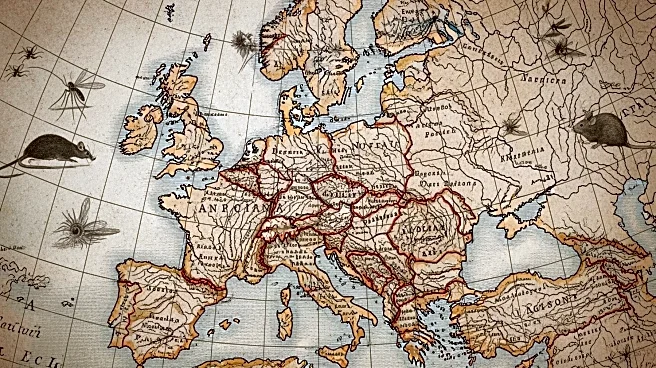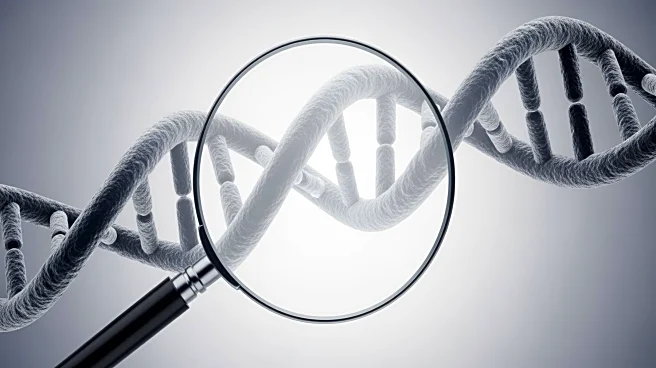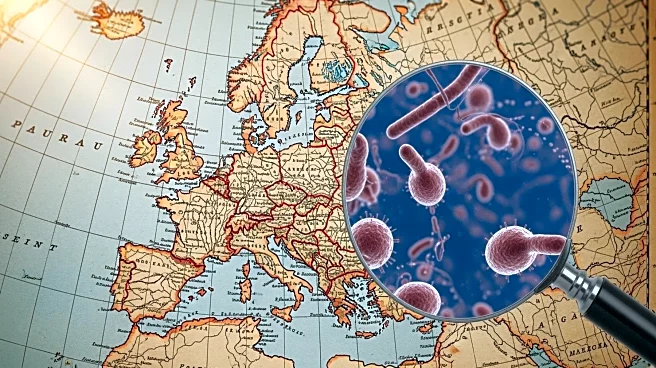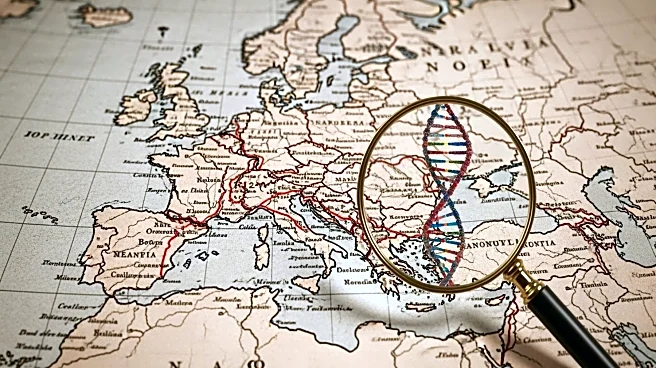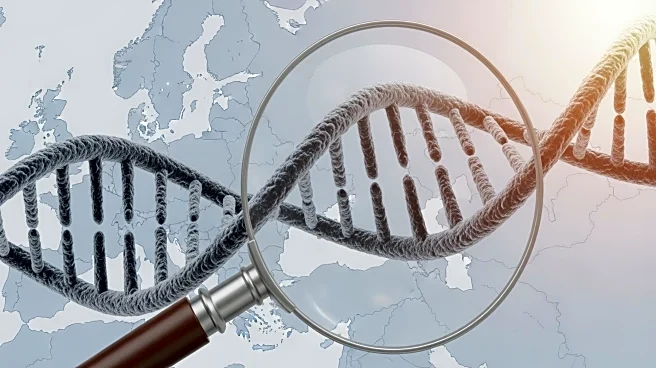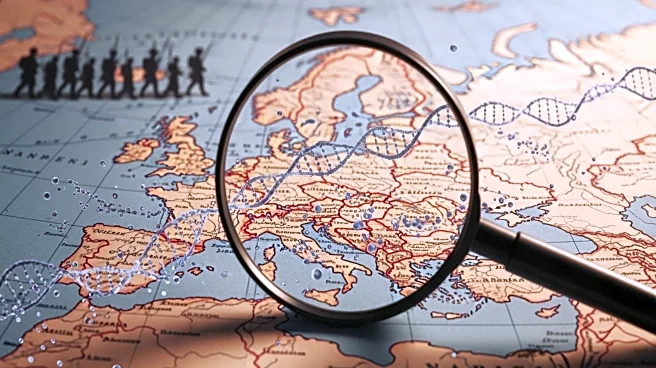What's Happening?
A recent study has uncovered the pathogens responsible for the significant losses suffered by Napoleon's army during their retreat from Russia in 1812. Researchers analyzed ancient DNA from the teeth of
13 soldiers and found evidence of paratyphoid fever caused by Salmonella enterica and relapsing fever caused by Borrelia recurrentis, a bacterium transmitted by body lice. This discovery challenges previous assumptions that typhus, caused by Rickettsia prowazekii, was the primary disease affecting the troops. The study highlights the use of modern metagenomics to diagnose historical diseases, providing new insights into the factors that contributed to the army's decimation.
Why It's Important?
The findings offer a revised understanding of the historical events surrounding Napoleon's retreat from Russia, emphasizing the role of disease in military outcomes. This research not only sheds light on the past but also demonstrates the potential of modern scientific techniques to reinterpret historical events. The study's implications extend to the fields of history, archaeology, and epidemiology, as it underscores the importance of considering multiple factors, including disease, in historical analyses. The identification of specific pathogens also contributes to a broader understanding of how infectious diseases have shaped human history and military campaigns.
What's Next?
Further research is anticipated to expand the sample size beyond the 13 individuals initially studied, which could provide a more comprehensive picture of the epidemic diseases that impacted Napoleon's forces. This could lead to a deeper understanding of the health challenges faced by historical armies and the role of disease in shaping historical events. Additionally, the study may inspire similar investigations into other historical military campaigns, potentially leading to new discoveries about the impact of infectious diseases on historical outcomes.
Beyond the Headlines
The study raises questions about the ethical considerations of using human remains for scientific research, particularly in the context of historical events. It also highlights the potential for modern technology to challenge long-held historical narratives, prompting a reevaluation of historical records and assumptions. The research may influence how historians and scientists collaborate to uncover the past, blending traditional historical methods with cutting-edge scientific techniques.




